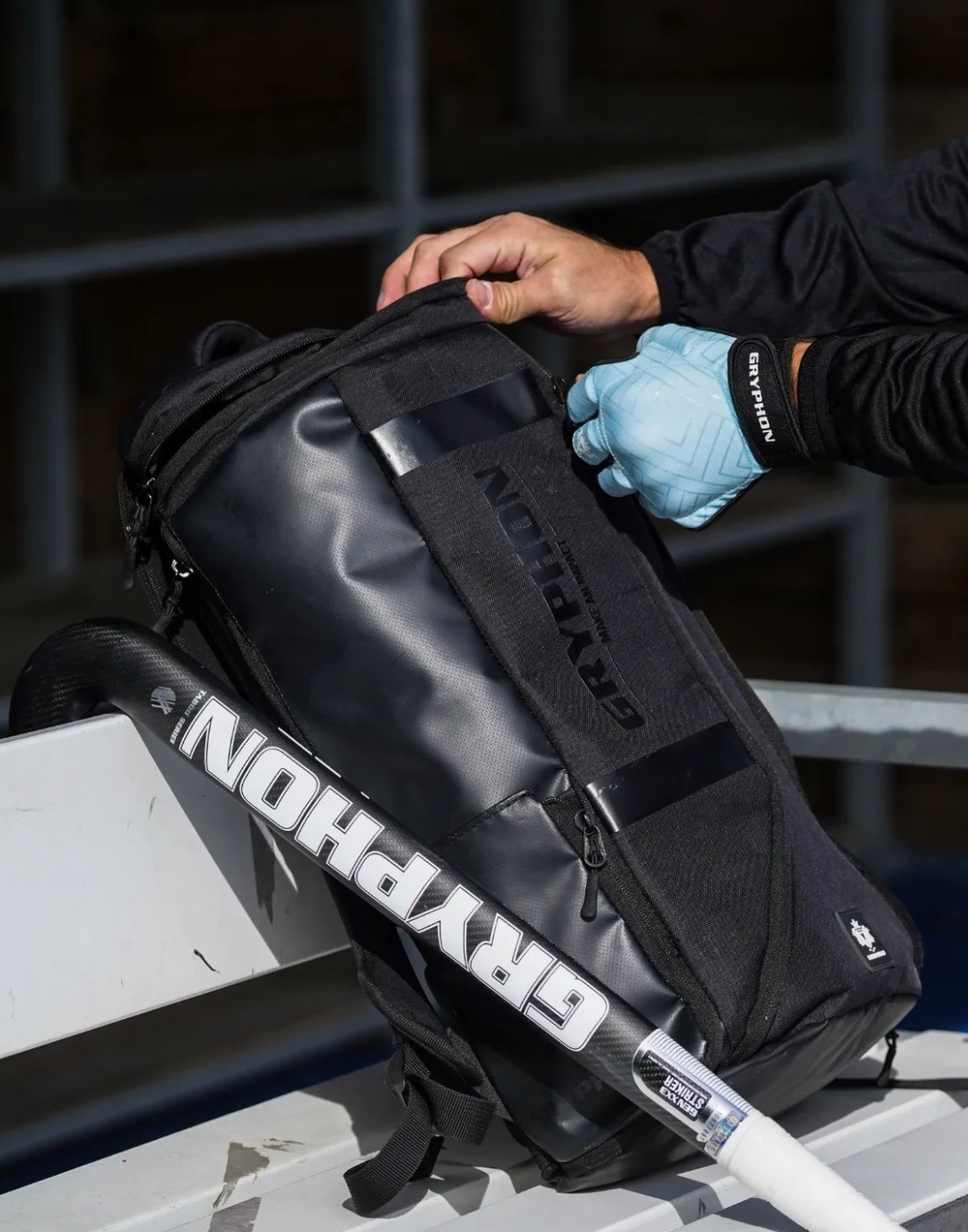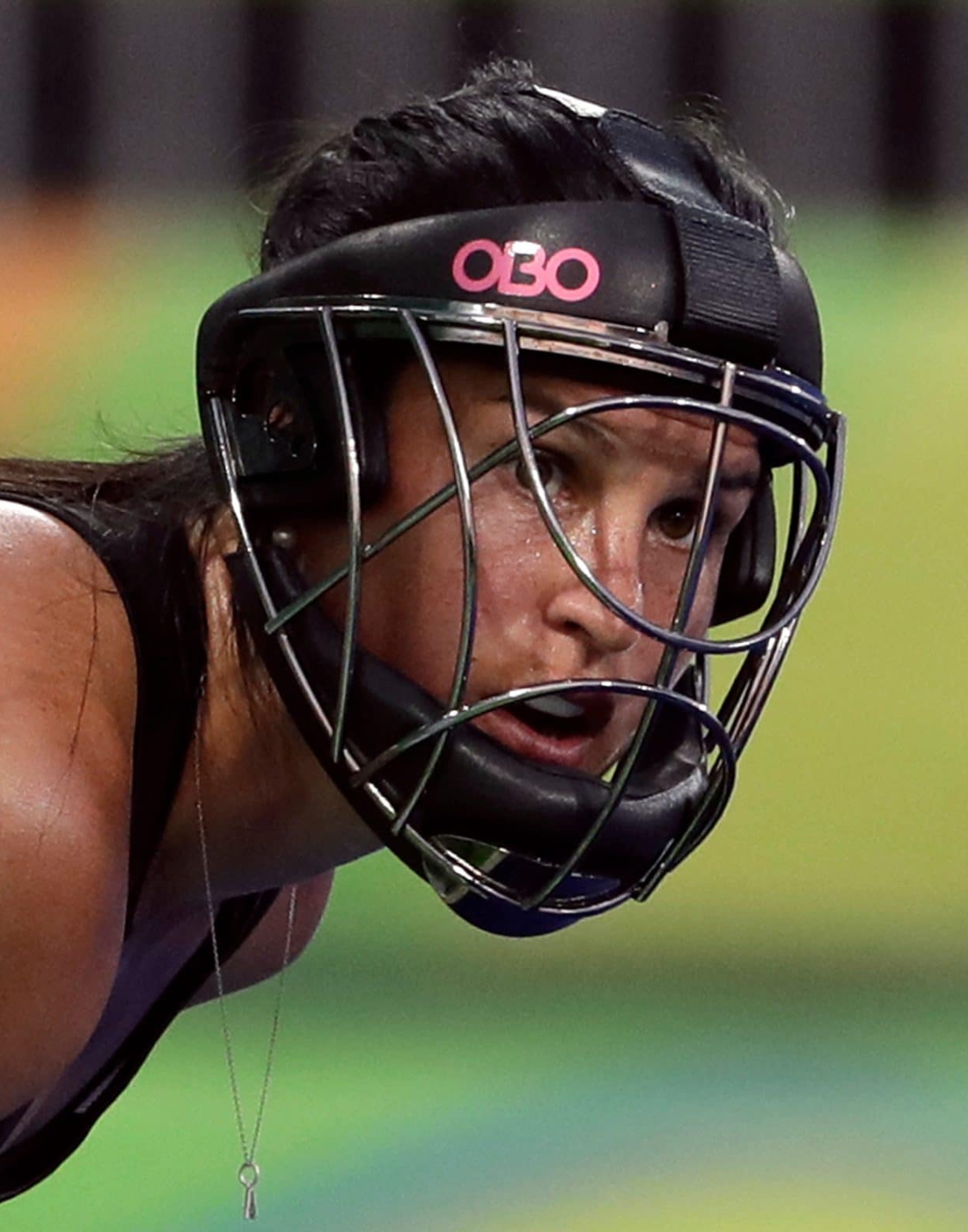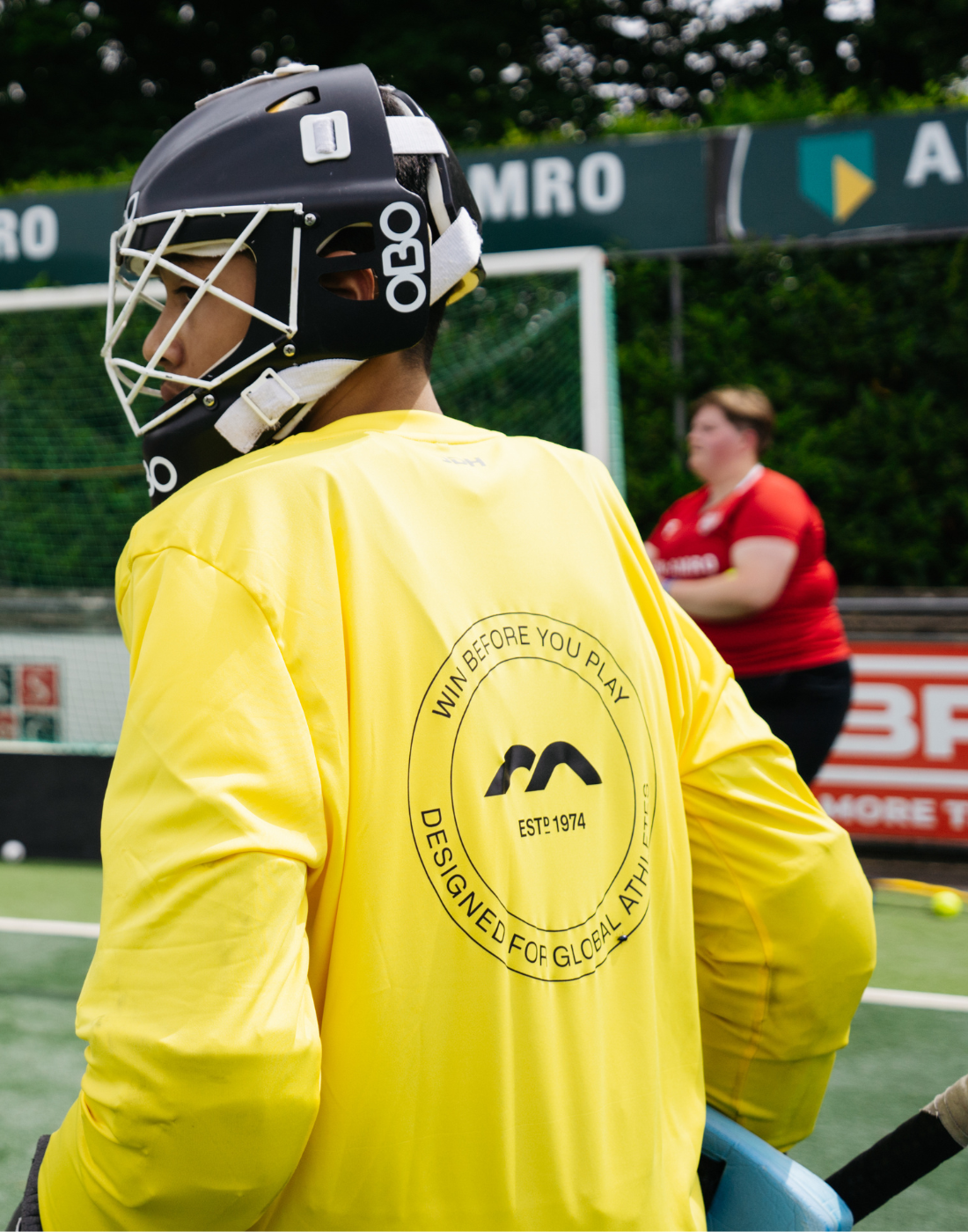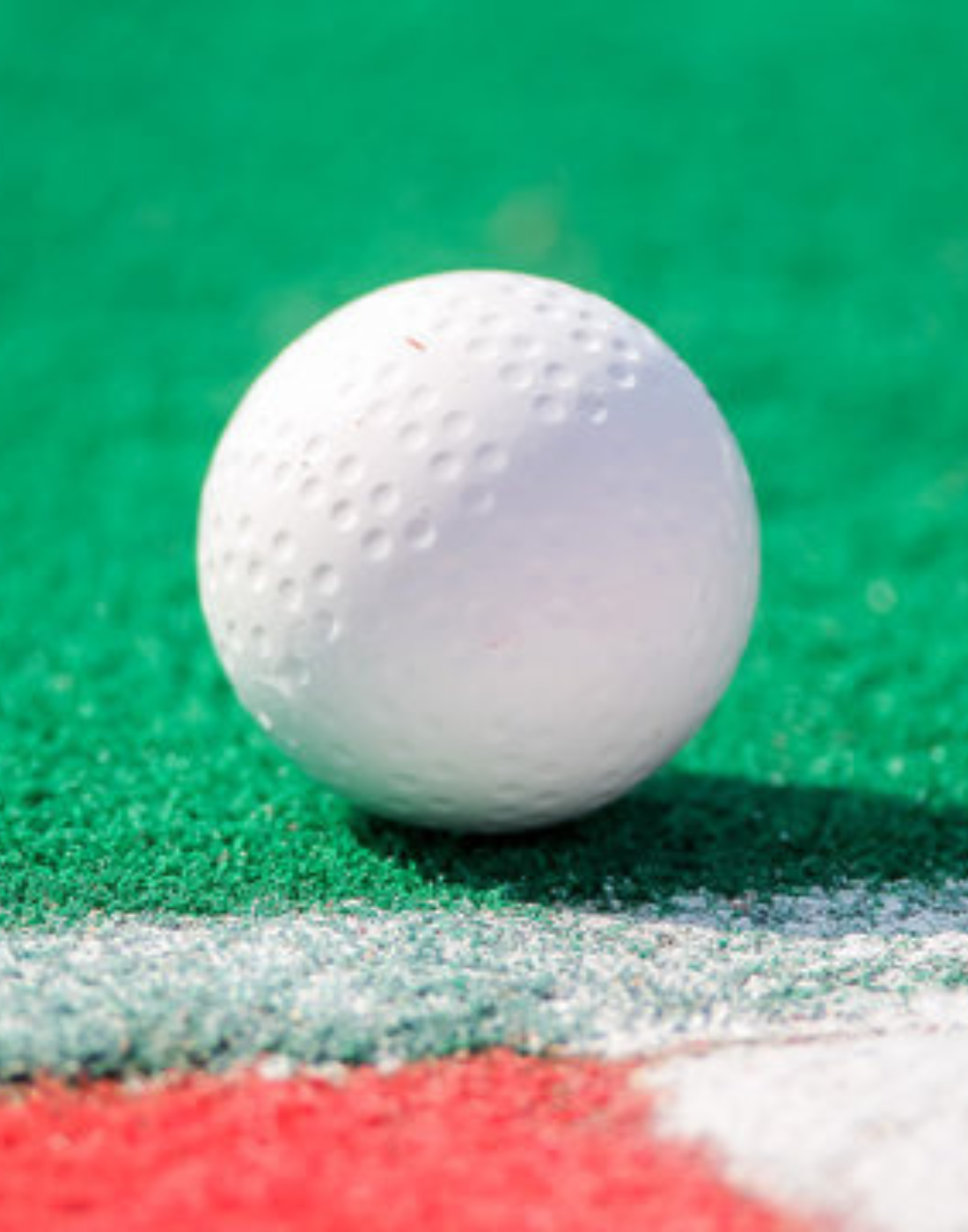Hockey requires using a hockey stick to play the game, so getting the right hockey stick means a lot! If you wonder what hockey stick I should buy, you have come to the right place.
We at Total-Hockey know that buying a hockey stick for yourself or others can be overwhelming, so we have devised this (Hopefully) easy blog to make sure you buy the right hockey stick.
What Size Of Hockey Stick Do I Need?
There is no clear answer to which hockey stick is best? Instead, the question should be, which hockey stick is the best for you? And a lot of that is answered by finding the right hockey stick size.
At Total-Hockey, we use the easiest and simplest method, the 'Belly Button' method. All you need for this to work is a measuring tape and the player that needs a new stick size.
To get the right length, this method uses the measuring tape measure from the center of the belly button to the floor in inches. That is it, how simple was that!
To get the complete guide on how to measure the proper length of a hockey stick, please read our Blog on How To Size A Hockey Stick.
What Do All The Bends and Bows Mean?
If you are keep asking yourself what stick should I buy, then at first you must understand what the bends of the stick signify. Hockey sticks are never perfectly straight, and they come in various angles and shapes. The easiest way to remember the difference in hockey stick bows is that the closer the bow is to the head of the stick, the easier it is to get the hockey ball in the air.
If you want more information, please read out Blog on What Hockey Stick Bend Should I buy?
Standard Bow
This is the hockey stick bend that most junior and entry-level adult sticks come in. The standard hockey stick bend is not aggressive or in your face! To see the full range of Standard Bow Hockey Sticks, Click Here.
Low Bow
This is the most common hockey stick bend on the market, designed for all-around hockey players. Moreover, the Low Bow means that the bend in the shaft is closer to the head.
As a result, you can get the hockey ball in the air a little bit easier without compromising your hitting ability. To see the full range of Low Bow Hockey Sticks, Click Here.
Mid Bow
This is a hockey stick bend for hockey players who want to keep the hockey ball on the hockey pitch consistently. The shape of this hockey stick is designed by keeping the bow is in the middle of the hockey stick shaft.
We have found that hockey players who prefer hitting the ball a lot would like a hockey stick with a Mid Bow. To see the full range of Mid Bow Hockey Sticks, Click Here.
Pro Bow
The Pro Bow bend on a hockey stick is designed to be somewhere between a Mid Bow and a Low Bow. It is perfect for people who still prefer to keep the ball along the ground but occasionally needs to get it in the air via some silky 3D skills. To see the full range of Pro Bow Hockey Sticks, Click Here.
Extreme Low Bows
This is the most extreme bend on a hockey stick on the market. The curve is right at the legal limit of how close the angle can be to the head of the stick. This hockey stick bend is designed for players who want to quickly get the ball in the air. So it is perfect for throwing aerials and 3D skills. Click here to see the full range of Extreme Low Bow Hockey Sticks.
Scooped Face or Concave Bow
This is a very specialized hockey stick for players that Drag Flick during attacking short corners. Most of these will be a hockey stick with an Extreme Low Bow. These also feature a shaft groove to allow the ball to get extra power and whip for when dragging the ball.
These sticks are not for people who don't Drag Flick. It is simply because it would be like carrying around a tool every day without ever using it. Click here to see the full range of Scooped Face Bow Hockey Sticks.
What Does Carbon Mean In A Hockey Stick
One of the most questions we face is what Hockey stick should I buy? If you want to find the correct answer to this question, understanding the build material of your stick is vital.
Modern hockey sticks are made up of many different materials, from Wood to Carbon Fiber and almost everything in between. However, the idea of having different materials in a hockey stick means many other things.
This includes anything from how hard you can hit the ball to the softness of the stick for close control. But again, here at Total-Hockey, we hope to have made things easier on you when getting the suitable hockey stick material.
If you want to read more about hockey stick materials, please read our blog on What Does Carbon Mean In A Hockey Stick.
Wood
Wooden hockey sticks are hockey sticks that are made from the simplest materials. We would always suggest kids starting their hockey career buy a wooden hockey stick.
We have found them to be the best stick for beginners as they are lovely and soft, perfect for developing skills. These sticks can be used on any surface, including hockey pitches, driveways, and gardens. Moreover, they are perfect for learning the game anywhere and anytime.
They are also designed for players who would still play on a gravel hockey pitch. To see the full range of Wooden Hockey Sticks, Click Here.
Fiberglass
Fiberglass hockey sticks are the next level of hockey stick up from a wooden hockey stick. These are the softest of the composite hockey sticks, making them ideal for hockey players who are still finding their feet in our beautiful sport.
These sticks will generate more hitting power than a wooden hockey stick. To see the full range of Fiberglass Hockey Sticks, Click Here.
Carbon
Carbon Hockey sticks are now the most common hockey sticks on the market. The higher the carbon content of a hockey stick, the higher the hitting power you have. All you need is a bit of effort being put in.
We would always suggest working up the carbon points with each stick you buy instead of jumping high amounts of carbon. We have split our carbon hockey sticks up into what we think are the perfect carbon points for players to work up.
We would suggest this because we never want you to leave with a hockey stick and when you use it doesn't feel like you have the right one!
However!
There are many misconceptions about carbon in hockey sticks. Let us dive in and discuss some of them in brief.
- Carbon Makes a Hockey Stick Lighter/Heavier - This isn't true; hockey sticks have a set weight regardless of the composition of the hockey stick.
- The More Carbon in The Stick, The Better the Stick – Again, this isn't true. We have worked out that you need to move up the carbon points in a gradual manner so that you get the most out of your hockey stick. So don't just buy an expensive hockey stick and dislike how it feels on the pitch!
Too Long To Read, Summary
- To find the size of a hockey stick, measure from the Belly Button to the Floor in inches. For further info, see the Hockey Stick Sizing Blog.
- The Lower the bow on the stick, the easier it is to get the ball in the air. For further info, see the Hockey Stick Bend Blog.
- Wooden hockey sticks are perfect for first-time hockey sticks. It is also appropriate for people who only need to do hockey for the school.
- Fiberglass hockey sticks are the entry-level composite sticks used only on astro turf hockey pitches. Otherwise, they will wear too quickly. They proved more hitting power over the wooden sticks while remaining soft!
- Carbon Hockey sticks are designed to give you more power with less physical effort. For further info, see the Hockey Stick Carbon Blog.
- We always recommend working up the carbon points rather than jumping up too far. Otherwise, the stick might not feel appropriate when playing with it.









